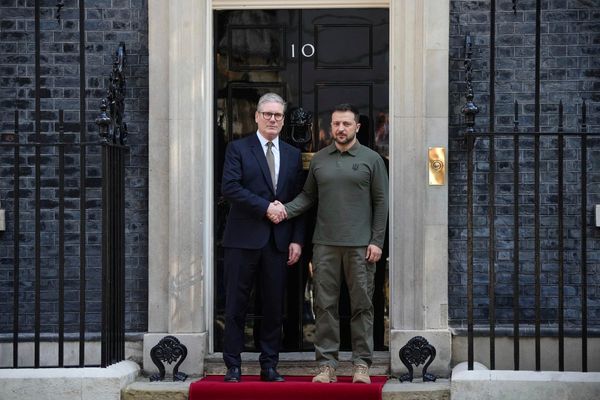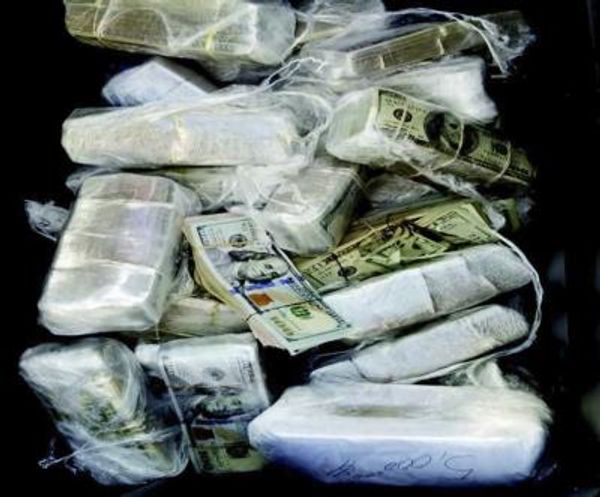
In this season of President Donald Trump and Democratic nominee Joe Biden, another name is invoked with surprising regularity: former President Franklin D. Roosevelt. Trump tried to embrace FDR’s “nothing to fear” line to rationalize downplaying a public health crisis—something FDR would never do. Biden, meanwhile, is finding his inner Roosevelt. If he wins in November, his Build Back Better agenda could be a less transformational but still historic version of Roosevelt’s New Deal. And his foreign policy would be focused on restoring the architecture of alliances designed by FDR at the end of the Second World War.
Roosevelt’s first national campaign came 100 years ago in the election of 1920, when the young former assistant secretary of the navy—a year before he was stricken with polio—was the Democratic vice-presidential candidate. The winner that year was Republican Warren Harding, who promised “a return to normalcy” after the Great War and the influenza pandemic of 1918, which cost about 675,000 Americans their lives. Biden’s campaign seems like a Democratic variation on the same theme—an argument to lower our voices and restore the soul of America.
But he will do it in the spirit of FDR. On the surface, the two men have little in common. Roosevelt was a patrician governor; Biden, a creature of the Senate, is a self-described middle class Joe. Roosevelt was elected president on his first try at age 50; if Biden wins on his third try, he would be—at 78—the oldest president ever. While neither struck contemporaries as cerebral, Roosevelt was a canny, even manipulative executive who never let anyone get too close; Biden is an often guileless, undisciplined politician with a gift for friendship.
And yet Roosevelt and Biden share a nobility born of personal suffering—and a historic opportunity afforded by national trauma. That gives Biden a rare chance to make “hope and history rhyme,” as he said in his acceptance speech at the Democratic National Convention in August. For years, Biden has used that line from the Irish poet Seamus Heaney to conjure the Kennedys and the idealism of the 1960s, when he came of age. Now the historical moment he evokes is the 1930s, when Roosevelt pulled the country out of the fetal position with his thrilling first Hundred Days.
“Nearly a century ago, Franklin Roosevelt pledged a New Deal in a time of massive unemployment, uncertainty, and fear,” Biden said in his convention speech. “Stricken by disease, stricken by a virus, FDR insisted that he would recover and prevail and he believed America could as well. And he did. And so can we.”
To be accurate, Roosevelt never insisted during the Depression that he would recover from polio; in fact, he didn’t talk about it publicly (except obliquely in 1945) or allow himself to be photographed in the wheelchair he used every day. But FDR’s polio was no secret—his backers founded the March of Dimes, which raised money to find a cure—and his unspoken message was that if he could rise and walk again (as he seemed to be doing on the arm of his bodyguard and son), so could the nation. He frequently used medical metaphors to make his point, explaining, for instance, in 1942: “Dr. New Deal has become Dr. Win-the-War.”
Biden also uses a medical metaphor. He speaks often of healing the nation from the divisions created by Trump and the stress of coping with Covid-19. And like FDR, he fuses his personal suffering and resilience with the character of the American people.
Good leadership requires such character. Before FDR was stricken with polio (in 1921), and before Biden suffered the loss of his wife and daughter in a car accident (in 1972), both had been callow, impetuous young men. Only with tragedy came a deeper, more authentic connection to the pain so many Americans live with every day. FDR had more enemies than most remember, but his impressive combination of candor and optimism brought him new levels of public approval, even though it took the onset of World War II to end the Depression. Similarly, after the 2015 death of his son, Beau, viral videos of Biden comforting cancer survivors (and, memorably, counseling 13-year old Brayden Harrington on how to overcome his stutter, as Biden had), are showing voters Biden’s true character better than any speech.
FDR and Biden are also aligned ideologically. There’s a striking symmetry to their proposals, as if the historian Arthur M. Schlesinger Jr.’s long-delayed “cycles of history” theory were finally coming true. FDR immediately put 250,000 young men to work clearing trails and planting trees in the Civilian Conservation Corps (CCC); Biden wants a U.S. Public Health Jobs Corps to enlist 100,000 young people to handle COVID-19 tests and other health challenges. FDR legalized collective bargaining and instituted a minimum wage; Biden wants new laws to strengthen unions and favors raising the minimum wage to $15 an hour. FDR’s Works Progress Administration (WPA) and Public Works Administration (PWA) were among the alphabet soup of agencies that built schools, hospitals, highways, bridges, dams, post offices, and other projects. Biden has laid out a “sustainable infrastructure” plan that would make many similar public investments but also pump federal money into new U.S.-based jobs in clean energy technology. FDR launched Social Security in 1935; Biden would secure its funding source, the payroll tax (which Trump wants to slash), add a public option to the Affordable Care Act and lower the age of Medicare eligibility from 65 to 60.
What else Biden does depends on the nature of the problems he would face next year. The animating spirit of the New Deal was practical, not ideological. FDR called for “bold persistent experimentation. It is common sense to take a method and try it. If it fails, admit it frankly and try another. But above all try something.” Because he comes out of the moderate wing of the Democratic Party, Biden shares that pragmatic bent and would likely govern in a less partisan way. Of course, he will need to flip the Senate to get anything done. Few remember that Roosevelt brought in 97 new House Democrats on his coattails in 1932.
More important, FDR faced a more compliant Senate. It’s true that in the days when Senate filibusters had to be undertaken in person, Huey Long, the fiery Louisiana populist, spent all night on the Senate floor reciting Shakespeare and Southern recipes in an effort to derail the National Recovery Act and, later, the Social Security Act. But Long ultimately failed, and FDR—though blocked on his 1937 court-packing scheme and several other bills—shepherded most of his program through Congress.
Even if Democrats take the Senate in November, they will not have anywhere near the 60 votes necessary to break the filibuster. After years supporting the filibuster, Biden, echoing Obama at John Lewis’ funeral, now says he will “take a look” at revising it. This would be a critical and tough decision for him. If he relies on his long history of close relations across the aisle and tries to get bipartisan approval for his program, he risks failure—or bills so watered down that the progressive wing of the Democratic party revolts. But if he uses his influence to lift the filibuster, he risks a future Republican president—a smarter Trump—ramming destructive legislation through. The best bet is that Biden further reforms the already-weakened filibuster (it no longer applies to judgeships and executive branch appointments) without eliminating it entirely. If he means to take a leaf from the urgency of FDR’s First Hundred Days, he would do this immediately and ram as much legislation through as he can in 2021.
If Biden falls short on the domestic side, he would likely turn his gaze overseas, where presidents have more leeway. Biden believes one of the biggest challenges he would face as president would be renewing America’s global standing after the degradations of Trump. From kissing up to dictators and trashing allies to abandoning the Paris Climate Accords, the Trans-Pacific Partnership and the Iran nuclear deal, it’s as if Trump chose to undo not only everything that President Obama did but everything President Roosevelt stood for, namely the structure of collective security that has prevented another world war for the last 75 years.
As a former vice president and former chairman of the Senate Committee on Foreign Relations, Biden knows many the major actors on the world stage, including Chinese President Xi Jinping. And he has spent long hours studying the nuances of global politics. There is little chance of him coloring outside the lines—lines of bipartisanship, coalition-building, and respect for multilateralism that were first laid out by FDR.
When Roosevelt died in 1945 and his funeral train made the long trip north from Warm Springs, Georgia, a reporter in Washington saw a man crying when the train passed. “Did you know the president?” the reporter asked. “No,” the man said. “But he knew me.” This is the essence of Biden’s appeal, too, and it’s an effective one.







